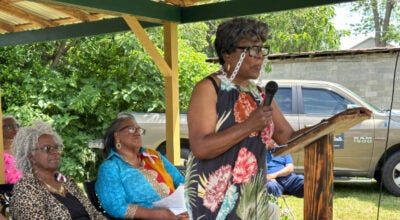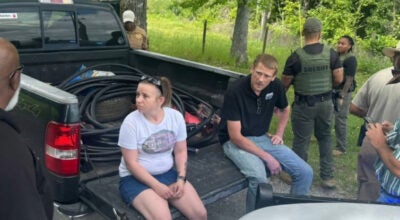NASD board talks future of facilities
Published 12:11 am Saturday, November 8, 2014
NATCHEZ — The future of how the Natchez-Adams School District will physically look in the coming years could be put on paper soon.
Members of the NASD Board of Trustees heard from representatives of a consulting firm earlier this week that came to Natchez at the request of Superintendent Frederick Hill.
Outlining a facility improvement plan is something board members charged Hill with completing last year.
“We want to look at how we can take what we have and improve it,” Hill said. “This is the start of my thoughts on how we can address the needs of the district now and what we think the needs of the district will be in the future.”
Leon Barkan and Philip Russell with Volkert Inc, a consulting firm based in Mobile, Ala., walked board members through a four-step process that would assess the facilities in the district and student population data, among other things, to create a capital improvement plan.
The facility assessment report, Russell said, is a key first step for the plan.
“We’ll bring a whole group of people that come through, assess these facilities and come up with a type of condition your school is in and identify those that are in critical need,” Russell said. “What we’re going to be able to see is can the school be renovated or, if not, do we need to look at building another school?
“At the end of the day, we might see that renovating the facility to get it to where you want it to be wouldn’t be as cost effective as just building something new.”
Russell said the entire process would require heavy input from district officials, and eventually the public to provide feedback on what positives and negatives they see at their schools everyday.
“Once we’ve presented a capital improvement plan to the board, at that point in time it’s extremely important to go to the community for feedback,” Russell said. “You want to receive input from the community and make sure you’re asking, ‘What do you want?’”
Russell said a solid plan that has input from the community could go a long way if the district would eventually need the support of taxpayers to help fund renovations or the construction of a new facility.
“You want to be able to go out and convey to the general public what exactly you need and have a definitive plan that’s been vetted for what you need and how much it’s going to cost,” Russell said. “You’ll be able to go out and get serious feedback with that plan in place.”
Board member Thelma Newsome said receiving support from the public, especially in terms of a referendum asking taxpayers for funding, caused her concern.
“We have a large population of private schools, which means we don’t have a lot of people who are pro public education,” Newsome said. “What if we go through all this process, and we’re not able to pass a referendum? What happens then?”
Barkan, Volkert’s vice president of program and construction management, said the firm can’t guarantee the public will approve any sort of funding measurers, but said the company could provide all the tools needed to help show the public what the district needs.
Barkan described a project in a Louisiana school district that had to put a funding measure before the public four to five times before they received funding.
If the district ended up deciding to ask taxpayers for funding, Hill said board members should not go into the process thinking it would be approved the first time.
“It’s not uncommon for it to be turned down the first or second time,” Hill said. “It’s all about how you improve the information each time.”
Board president Tim Blalock said the next step would be to get pricing information from the company to complete the plan and appropriate studies.
The Volkert representatives told board members they normally charge between $6,000 to $7,000 per school for the work.
The NASD has eight sites that could be examined, but Blalock said they could determine which schools were highest on the list of needing improvements.
The entire process, Barkan said, would take nearly 90 to 120 days to complete.
Board members asked Hill to present a formal proposal for the work to the board by its December meeting.





